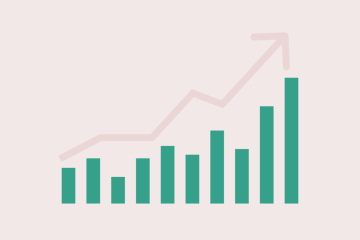
What do your spending habits say about you? Dive into your current account’s history
To stay on track of your personal finance goals, you should always start with reviewing your spending habits. Spring clean your current account with this step-by-step guide.
6 min read
After several weeks at home, you've probably found the time to scrub every nook and cranny, finish that pile of books you’ve always wanted to read, binge watch a few box sets, exercise, cook, fill up your calendar with video calls and even re-organize your closet. Well, maybe now is the time to do the same with your finances. Just like you would clean out and reassess your wardrobe for a new season, we’re encouraging you to take a look at your current account to learn more about your spending habits. Start by looking back and going through your spending habits over the last few months. The idea is that once you’ve learned everything you need to know from this article, you'll be able to answer the following questions: how well have you spent your money over the last few months? Are you happy with your level of spending, or do you feel that you've been wasting money? Is there anything that you want to change?
Arm yourself with a pencil, paper, calculator and your N26 app—or whichever bank you use—and let's go! We recommend that you take the last 6 months as a benchmark to conduct a reliable, in-depth analysis. A quick glance at the statistics page in the N26 app will give you a snapshot of your expenses and income during the last month, as well as the average over the last quarter. You can scroll month by month to see how your expenses vary and what percentage you spend each month on categories like Food & Groceries, Housing & Public Services, Bars & Restaurants, ATMs, Leisure & Entertainment, and so on.
In a nutshell, looking at your spending habits as categories on a monthly basis will give you a better idea of which expenses you're spending more on than expected. Now that you've taken note of this, you can easily record your transactions.
But before making any changes, let's focus on what we can't change—those unavoidable expenses that we all have every month: our fixed expenses. Grab your notepad and write these down, then add up the total spent on rent, electricity, water and internet bills, public transport pass, food, etc. It's important that you add up all of these amounts and visualize how much of your income is "eaten up" by these expenses.
If you want to dive deeper, we recommend that you don't just calculate your monthly expenses, but also include your annual ones. In other words, these include expenses you only pay once a year, but which take up a significant proportion of your budget, like car insurance, or special taxes you have to pay in one go. These figures will help you to better understand how much you're really spending and how it affects your bank account.
Moreover, you might get a discount or special price for making a single payment rather than paying by instalments. Just your homework—it all adds up! This is where most of us might get a real shock. Take another look at your statistics and go through, month by month, how much you spent on Bars & Restaurants, Leisure & Entertainment, Travel & Vacations, or Shopping. Does it change much from month to month? These are the expenses you can consciously change by your own free will. You'll probably be more than a little surprised when you see the total amounts you're spending on each category per month. Just keep your cool! This is a learning experience—once you realize which expenses you can cut back on, you'll start putting this into practice. But only you can create this positive change. It might help to set spending limits for each category— for example, spending no more than €200 a month on eating out or going to bars. You might even change your habits and cook more at home. Another helpful tip is to avoid withdrawing cash, since it's easier to spend and harder to control. You'll also have all your expenses together in one place directly in the app! Armed with this information, you can now be honest with yourself when you ask: how well have I spent my money over the last few months? Am I happy with my level of spending, or do I feel that I have been wasting money? Is there anything that I need to change? Subscription alert! We know that consumer habits are moving towards "freemium" subscription models. While this has its benefits, are you actually taking advantage of all your subscriptions? Grab your pencil and paper again and list all your subscriptions: record what you pay for all of them, from the gym to Netflix and Spotify. Are you actually making the most of all of them? Is there any way to lower that amount? Maybe with a family subscription, or by splitting the cost with friends who want to share a group discount plan? Answer these questions by yourself and apply your own filters. If you have subscriptions you're not using, it might be better to pause or cancel them altogether. Think about your lifestyle and your plans in the coming months to figure out which make sense and which don't. We really mean it when we say that the savings are in the details, and this is a great example. Get rid of the services you aren't using, and you'll immediately notice the difference in your current account. Now that you've gotten rid of what you don't use, we suggest you take another quick look and ask yourself one last question: out of all the expenses that you've reviewed, which ones are absolutely necessary and which could you do without? You don't have to apply a war economy to your account. However, you should be able to pinpoint which expenses you can cut down on, given these are not strictly essential, and which ones you can't control, since they'll still be there no matter what you do. In other words, once you become aware of your spending habits, you can keep these under control and reduce them—if that's your aim. That's why we say that when it comes to saving money, it's more important to determine how much you spend rather than how much you save. While going through your expenses, you probably spotted at least one commission that you shouldn't have been charged. This might have been one you were debited while making a transfer, or through depositing cash from an ATM which didn't belong to your bank's network. You can be sure this won't happen with N26. On top of no hidden fees, our accounts also guarantee that you always get the best exchange rate—the official Mastercard rate—when paying in a foreign currency. No other currency exchange fees or commissions will be charged to your account. We hope that you'll find this advice helpful, and that these tips inspire you to get to grips with your bank account and your savings! To reiterate what we mentioned earlier, if you want to save up, we recommend you don't focus solely on the amount you're putting away. It's important to be aware of how much you're spending, since this will determine the amount you can set aside each month to grow your finances on Spaces.
‘Where does my money go?’—fixed expenses
Keep it up... — not so fixed costs
That subscription you don't use any more
Do I need it, or do I just want it?
Avoid commission
Find similar stories
BY N26Love your bank
Related Post
These might also interest youBANKING BASICSDear Money: an exercise for rewriting your financial scriptsWhether you feel stuck, anxious, or ready to make a change, writing a letter to money can help you reflect on and reset your financial mindset.
5 min read
INVESTBear market: This is what it meansIf you think a bear market sounds rather scary, you’re already on the right track. In this article, you’ll learn what a bear market is, why it occurs, how it affects your assets and how long it lasts.
11 min read
INVESTBull markets: What they mean for your moneyNot sure what bulls have to do with the financial world? The term is mostly symbolic — but bull markets can have significant effects on your investments. Read on to learn what a bull market is.
10 min read


